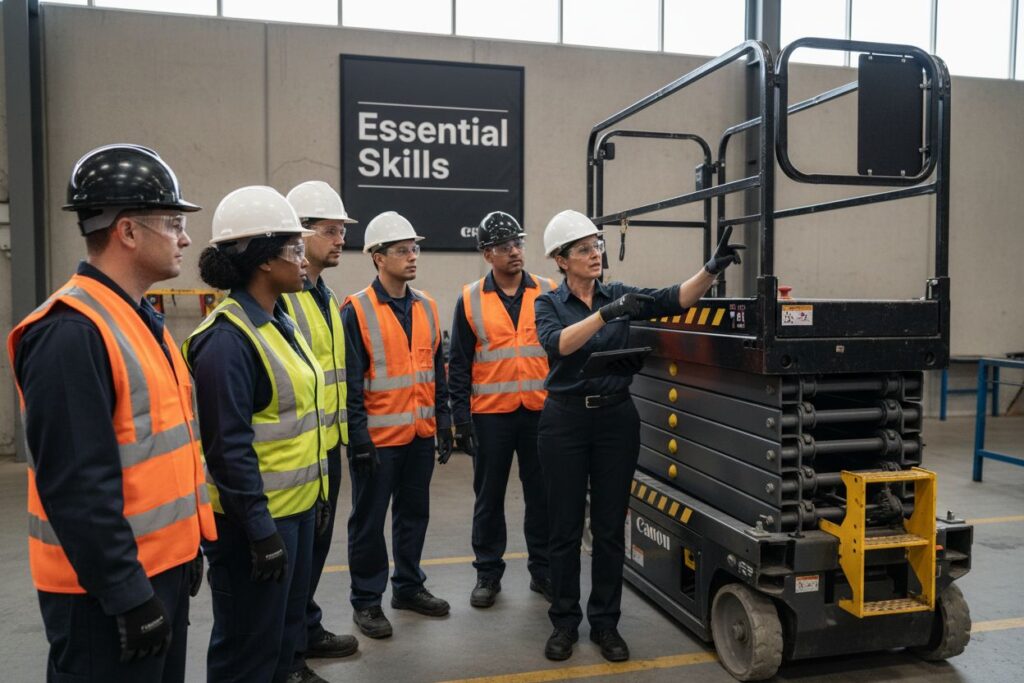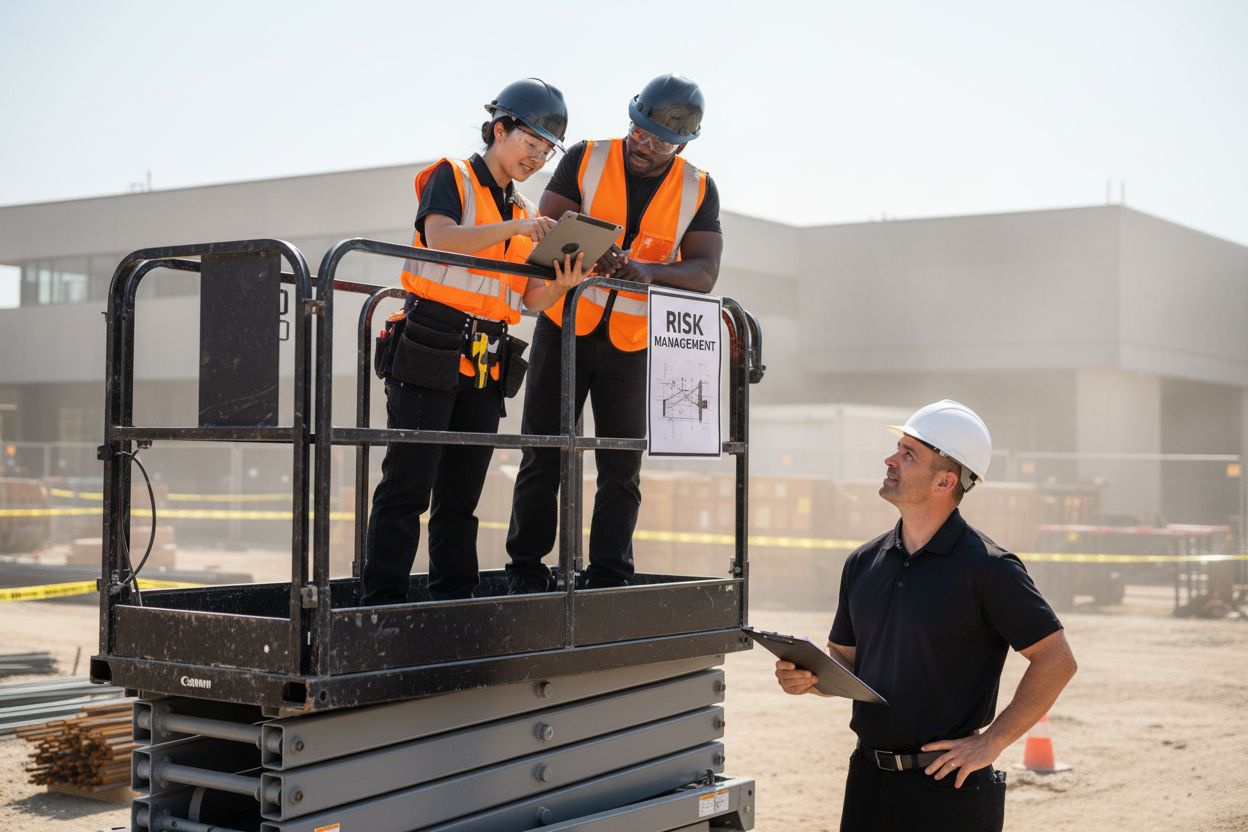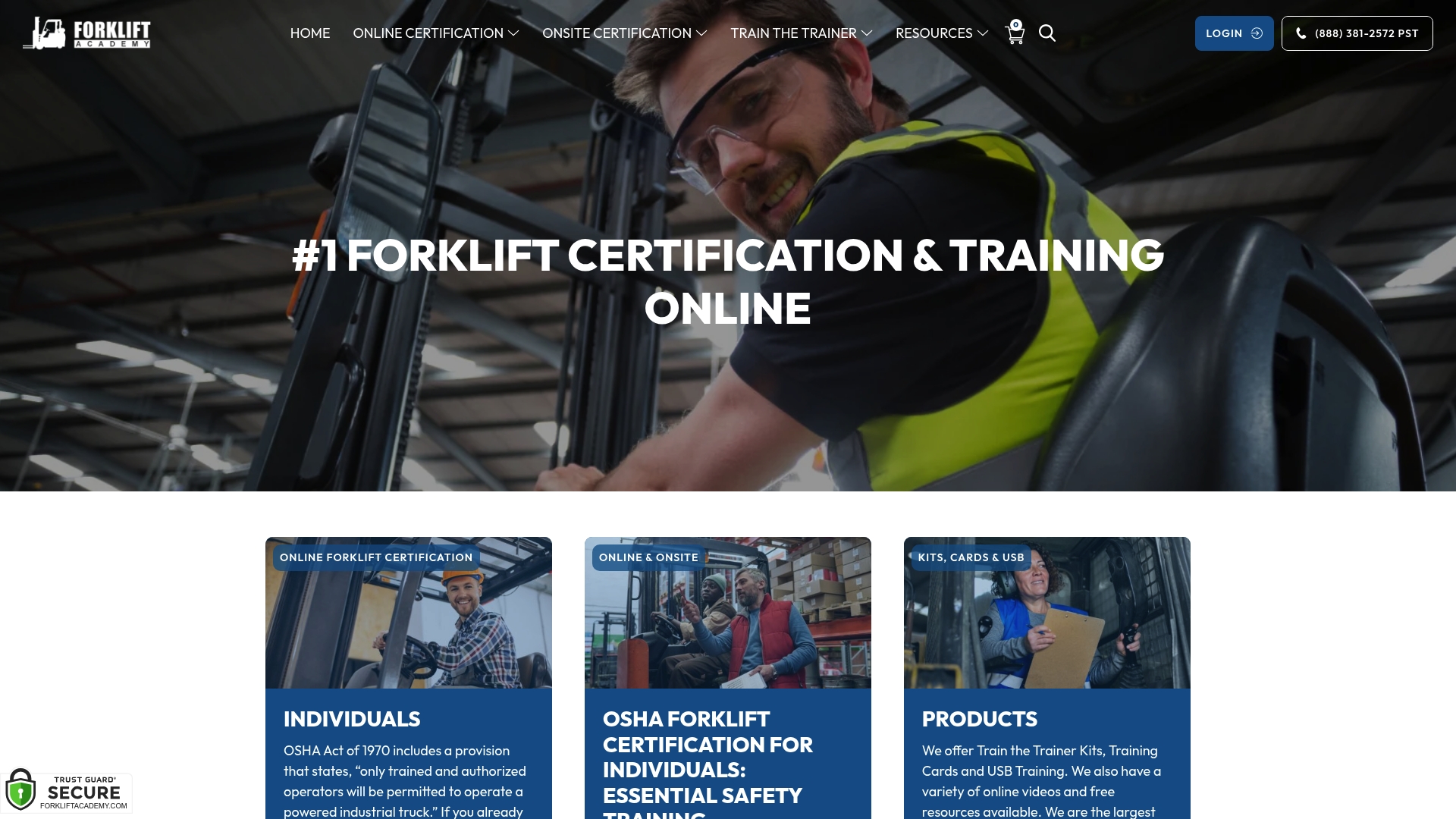
Scissor lifts power everything from construction jobs to warehouse work and keep people safer high above the ground. Yet even with all this tech, nearly 20 percent of serious workplace falls involve aerial lifts like scissor lifts every year. That may sound risky, but proper scissor lift training actually flips the script and turns these machines into one of the safest tools on a job site.
| Takeaway | Explanation |
|---|---|
| Comprehensive training is essential for safety. | Proper scissor lift training minimizes risks and prevents workplace accidents, ensuring worker safety across various environments. |
| Training includes critical risk management skills. | Operators learn to identify hazards, proper load capacities, and emergency protocols to better manage risks during equipment operation. |
| Effective training enhances operational efficiency. | Skilled operators navigate complex environments quickly, reducing downtime and improving overall workflow integration and productivity. |
| Investing in training mitigates financial risks. | Complying with OSHA regulations through proper training helps avoid fines, legal liabilities, and heightened insurance costs for businesses. |
| Hands-on experience builds confidence and competence. | Combining theoretical knowledge with practical skills in training helps workers gain the confidence needed to operate scissor lifts safely and effectively. |
Scissor lift training represents a critical safety education program designed to prepare workers for the safe operation and management of scissor lift equipment in various industrial and construction environments. OSHA guidelines mandate comprehensive training to minimize workplace accidents and ensure worker safety when using these elevated work platforms.
The fundamental purpose of scissor lift training goes beyond simple equipment operation. It encompasses a holistic approach to workplace safety that includes understanding mechanical systems, recognizing potential hazards, and developing critical decision making skills. Workers learn not just how to use the equipment, but how to assess environmental conditions, perform pre operational inspections, and respond to unexpected challenges.
Scissor lift training typically involves both theoretical knowledge and practical skills development. Workers receive comprehensive instruction covering several critical areas:
The following table organizes the main components of effective scissor lift training, summarizing each area to clarify their focus for new operators.
| Component | Description |
|---|---|
| Equipment Inspection and Maintenance Protocols | Teaches proper checks and servicing procedures to ensure lifts are safe to operate. |
| Load Capacities and Weight Distribution | Covers limits for safe lifting and load positioning on the platform. |
| Hazard Recognition and Mitigation | Instructs on identifying workplace dangers and minimizing risk factors. |
| Operational Techniques | Demonstrates correct procedures for controlling lifts in various environments. |
| Emergency Response and Rescue Procedures | Trains for potential incidents, including safe shutdowns and worker rescue actions. |
Professional training programs like those offered through scissor lift certification courses ensure that workers gain the necessary skills to operate these complex machines safely and efficiently. By combining classroom instruction with hands on practical training, workers develop the confidence and competence required to navigate challenging workplace scenarios.
The ultimate goal of scissor lift training is to create a safety conscious workforce that can effectively utilize elevated work platforms while minimizing risks to themselves and their colleagues.
Workplace safety is paramount in industries that rely on elevated work platforms, and scissor lift training plays a crucial role in preventing accidents and protecting workers from potential hazards. Research from the Bureau of Labor Statistics highlights the significant risks associated with improper equipment operation, underscoring the critical need for comprehensive safety training.
Scissor lift training directly addresses the most common causes of workplace accidents involving elevated work platforms. Workers learn to identify and mitigate risks such as unstable ground conditions, electrical hazards, overhead obstacles, and potential mechanical failures. By understanding these potential dangers, trained workers can make informed decisions that prevent potentially fatal accidents.
Effective scissor lift training goes beyond basic operation instructions. It provides a holistic approach to risk management that encompasses several critical safety dimensions:
Professional training equips workers with the knowledge and skills to create a proactive safety culture. Detailed safety guidelines help workers develop a comprehensive understanding of potential risks and the necessary precautions to mitigate them.
Beyond physical safety, scissor lift training has significant legal and financial implications for businesses. OSHA regulations mandate proper training, and non compliance can result in substantial fines, legal liability, and increased insurance costs. By investing in comprehensive training programs, companies protect their workers and reduce potential financial risks associated with workplace accidents.
Scissor lift training goes far beyond basic safety protocols and directly impacts workplace productivity and operational performance. Industrial safety research consistently demonstrates that comprehensive training programs significantly improve equipment utilization and worker confidence.
Professional training transforms novice operators into skilled professionals who can navigate complex work environments with precision and speed. Workers learn advanced techniques for maneuvering equipment efficiently, understanding mechanical limitations, and making quick strategic decisions. This skill enhancement translates directly into reduced operational time, fewer errors, and smoother workflow integration.
Well trained operators contribute substantially to equipment longevity and reduced maintenance expenses. Comprehensive training teaches workers critical skills that minimize potential equipment damage:
Professional scissor lift certification programs provide in depth knowledge that helps workers treat equipment with care, ultimately reducing unexpected breakdowns and expensive repair costs.
Training enables workers to seamlessly integrate scissor lifts into complex workplace environments. Operators learn to assess job site conditions rapidly, select appropriate equipment configurations, and execute tasks with minimal disruption. By understanding both technical operation and situational adaptation, trained workers can significantly accelerate project timelines and maintain consistent productivity levels across diverse industrial settings.
This table presents a comparison of how scissor lift training impacts both safety and operational efficiency across key dimensions.
| Training Impact Dimension | Safety Focus | Efficiency Focus |
|---|---|---|
| Risk Management | Identifying and addressing workplace hazards | Reducing equipment misuse and downtime |
| Legal/Financial Compliance | Meeting OSHA regulations, reducing liability | Avoiding fines and lowering insurance costs |
| Skill Development | Emergency procedures and situational awareness | Improved performance and rapid adaptability |
| Equipment Longevity | Minimizing accidents that could damage equipment | Prolonging machine life through careful operation |
| Productivity | Fewer accidents interrupt workflow | Streamlining tasks and accelerating project completion |

Scissor lift training encompasses a comprehensive curriculum designed to equip workers with essential knowledge and practical skills for safe and efficient equipment operation.
INFOGRAPHIC:infographic_content] [OSHA guidelines outline the critical components that form the foundation of effective training programs.
Training begins with a deep dive into the mechanical intricacies of scissor lifts. Operators learn about the complex hydraulic systems, structural components, and engineering principles that govern equipment functionality. This technical foundation enables workers to understand not just how to operate the machinery, but why specific operational protocols are crucial for safety and performance.
Effective scissor lift training goes beyond basic operational instructions and focuses on developing critical safety awareness and risk management capabilities:
Professional scissor lift training programs emphasize developing a proactive safety mindset that extends far beyond standard procedural knowledge.
The most advanced scissor lift training programs teach workers to adapt to dynamic work environments. Operators learn to assess job site conditions rapidly, make strategic decisions under pressure, and navigate complex spatial challenges. This involves mastering precise maneuvering techniques, understanding environmental limitations, and developing the situational awareness necessary to prevent accidents and optimize workflow efficiency.
Are you concerned about workplace accidents or struggling to meet OSHA standards for scissor lift operation? The article highlighted common risks, the need for proper equipment handling, and the importance of thorough training. Do not let uncertainty put your team in danger or slow your business. Our Forklift Safety Archive gives you access to up-to-date safety best practices and regulatory answers.

Choose the trusted provider with over 20 years of experience. At Forklift Academy, we deliver OSHA-compliant Forklift Certification and scissor lift training to individuals and businesses across the United States and Canada. Join thousands of professionals who protect their teams and streamline operations—visit https://forkliftacademy.com to start your certification journey today.
Scissor lift training is a safety education program designed to prepare workers for the safe operation of scissor lift equipment in industrial and construction environments, emphasizing risk management, equipment inspection, and emergency procedures.
Scissor lift training is crucial for preventing accidents by teaching workers to identify and mitigate hazards, understand equipment limitations, and implement safety protocols, ultimately creating a safer work environment.
Key components include proper equipment inspection, understanding load capacities, operational techniques for various environments, hazard recognition, and emergency response training.
Training helps operators develop skills for efficient machinery use, reduces equipment downtime through proper maintenance, and allows for smoother workflow integration, resulting in faster project completion and improved productivity.